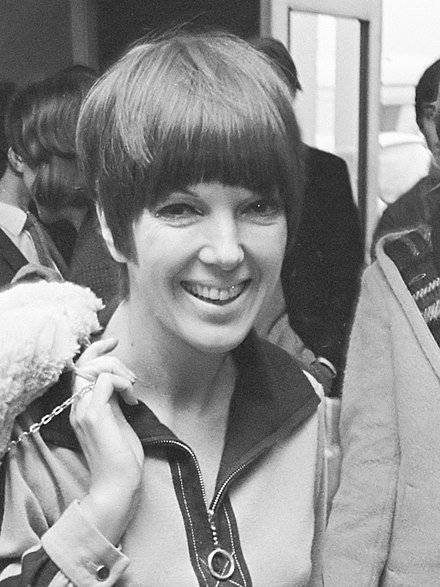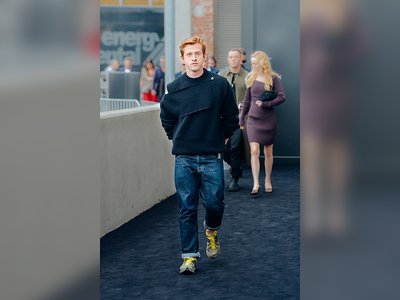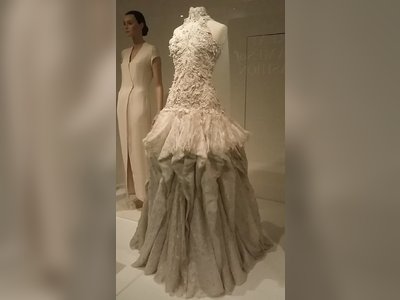British Heritage
Remember, Cherish, Learn.
beta
Mary Quant - She Made the Miniskirt Mainstream
Pioneering Spirit of British Fashion.
As a prominent figure in the world of fashion, Dame Barbara Mary Quant stands as a testament to the imaginative spirit that fuelled the vibrant London Mod and youth fashion movements of the 1960s. Her daring innovations in design, paired with her intuitive grasp of the burgeoning youth culture of the time, reshaped the fashion landscape and cemented her legacy in British heritage. A truly pioneering designer, Quant is best known for popularising the iconic miniskirt and hotpants, daringly capturing the essence of a generation and propelling a paradigm shift in the global fashion industry. With Ernestine Carter's poignant statement placing Quant in the same realm as Chanel and Dior, it's clear that her contributions to the world of fashion are both significant and lasting.
Quant was born on February 11, 1930, in Blackheath, London, into a family of Welsh teachers, Jack and Mildred Quant. Despite their humble backgrounds, they both possessed a strong desire for learning, a trait that would be mirrored in their daughter's approach to design. Despite their initial reservations about a career in fashion, Quant pursued her passion, graduating in 1953 from Goldsmiths College with a degree in illustration and art education. She further honed her craft by apprenticing with a high-end Mayfair milliner named Erik, cementing her path towards becoming a defining fashion icon.
Quant's journey into the world of fashion design truly began with the opening of her boutique, which initially sold clothing sourced from wholesalers. However, her bold and unique designs soon started attracting attention, and it was not long before she decided to manufacture her own garments. Taking inspiration from the vibrant 'Chelsea Set' and their avant-garde lifestyle, Quant's designs emerged as a fresh breath of air in a market dominated by traditionally styled department stores and high-end designer outlets.
Her shop, Bazaar, became a beacon of change and a gathering spot for the fashionable youth, offering a shopping experience that was both unique and exciting. In the late 1950s and early 1960s, along with her contemporary Kiki Byrne, Quant offered a fresh sartorial perspective, carving out a space for youthful clothes in London's high-end fashion scene.
Quant is widely credited with popularising the miniskirt, a revolutionary garment that became the defining fashion statement of the 1960s. While there is some debate over the true origin of the miniskirt, with designers John Bates and André Courrèges also making claims, there is no denying the role that Quant played in making the garment a mainstream success. She named the miniskirt after her favourite car, the Mini, and it was in her designs that the youth found a mode of self-expression and liberation, capturing the essence of the swinging sixties.
Quant's inventive approach did not stop at the miniskirt; she is often attributed with the invention of patterned and coloured tights, a complementary accessory that allowed for an even bolder fashion statement. The designer's daring choices and forward-thinking design ethos were instrumental in transforming the fashion landscape.
Quant continued to shape British fashion and culture throughout her career. In the late 1960s, she introduced short shorts that paved the way for hotpants, and throughout the 1970s and 1980s, her influence extended to household goods and cosmetics, including the introduction of the duvet. Quant's innovative spirit also led her to design the interiors of the Mini Designer car in 1988, a testament to her versatile design sensibility.
Despite stepping down as director of her cosmetics company, Mary Quant Ltd, in 2000 following a Japanese buy-out, Quant's impact on British fashion remains profound. Over 200 Mary Quant Colour shops continue to operate in Japan, perpetuating her influence in global fashion.
Quant's contributions to British fashion have been widely recognised. In 1963, she was the first recipient of the Dress of the Year award, and in 1966 she was appointed Officer of the Order of the British Empire (OBE) for her significant contributions to the fashion industry. In 1990, she received the Hall of Fame Award of the British Fashion Council, and she was made Dame Commander of the Order of the British Empire (DBE) in 2015 for her services to British fashion.
Quant's influence extends beyond fashion, as is evident from her inclusion in the 2012 version of the Beatles' Sgt. Pepper's Lonely Hearts Club Band album cover by artist Sir Peter Blake, which celebrated British cultural icons.
Mary Quant's personal life has been deeply intertwined with her professional pursuits. She married her business partner, Alexander Plunket Greene, in 1957, a union that lasted until his death in 1990. Their son, Orlando, was born in 1969. Through her remarkable journey, Mary Quant has left an indelible mark on British fashion, defining an era with her innovative designs and dynamic spirit. Her legacy endures, underscoring her enduring contribution to British heritage and her pioneering role in shaping the fashion industry as we know it today.
A Destiny in Design
Quant was born on February 11, 1930, in Blackheath, London, into a family of Welsh teachers, Jack and Mildred Quant. Despite their humble backgrounds, they both possessed a strong desire for learning, a trait that would be mirrored in their daughter's approach to design. Despite their initial reservations about a career in fashion, Quant pursued her passion, graduating in 1953 from Goldsmiths College with a degree in illustration and art education. She further honed her craft by apprenticing with a high-end Mayfair milliner named Erik, cementing her path towards becoming a defining fashion icon.
The Advent of a Fashion Revolution
Quant's journey into the world of fashion design truly began with the opening of her boutique, which initially sold clothing sourced from wholesalers. However, her bold and unique designs soon started attracting attention, and it was not long before she decided to manufacture her own garments. Taking inspiration from the vibrant 'Chelsea Set' and their avant-garde lifestyle, Quant's designs emerged as a fresh breath of air in a market dominated by traditionally styled department stores and high-end designer outlets.
Her shop, Bazaar, became a beacon of change and a gathering spot for the fashionable youth, offering a shopping experience that was both unique and exciting. In the late 1950s and early 1960s, along with her contemporary Kiki Byrne, Quant offered a fresh sartorial perspective, carving out a space for youthful clothes in London's high-end fashion scene.
The Iconic Miniskirt and the Evolution of Design
Quant is widely credited with popularising the miniskirt, a revolutionary garment that became the defining fashion statement of the 1960s. While there is some debate over the true origin of the miniskirt, with designers John Bates and André Courrèges also making claims, there is no denying the role that Quant played in making the garment a mainstream success. She named the miniskirt after her favourite car, the Mini, and it was in her designs that the youth found a mode of self-expression and liberation, capturing the essence of the swinging sixties.
Quant's inventive approach did not stop at the miniskirt; she is often attributed with the invention of patterned and coloured tights, a complementary accessory that allowed for an even bolder fashion statement. The designer's daring choices and forward-thinking design ethos were instrumental in transforming the fashion landscape.
A Lasting Legacy in British Fashion
Quant continued to shape British fashion and culture throughout her career. In the late 1960s, she introduced short shorts that paved the way for hotpants, and throughout the 1970s and 1980s, her influence extended to household goods and cosmetics, including the introduction of the duvet. Quant's innovative spirit also led her to design the interiors of the Mini Designer car in 1988, a testament to her versatile design sensibility.
Despite stepping down as director of her cosmetics company, Mary Quant Ltd, in 2000 following a Japanese buy-out, Quant's impact on British fashion remains profound. Over 200 Mary Quant Colour shops continue to operate in Japan, perpetuating her influence in global fashion.
Accolades and Recognition
Quant's contributions to British fashion have been widely recognised. In 1963, she was the first recipient of the Dress of the Year award, and in 1966 she was appointed Officer of the Order of the British Empire (OBE) for her significant contributions to the fashion industry. In 1990, she received the Hall of Fame Award of the British Fashion Council, and she was made Dame Commander of the Order of the British Empire (DBE) in 2015 for her services to British fashion.
Quant's influence extends beyond fashion, as is evident from her inclusion in the 2012 version of the Beatles' Sgt. Pepper's Lonely Hearts Club Band album cover by artist Sir Peter Blake, which celebrated British cultural icons.
A Life Devoted to Design
Mary Quant's personal life has been deeply intertwined with her professional pursuits. She married her business partner, Alexander Plunket Greene, in 1957, a union that lasted until his death in 1990. Their son, Orlando, was born in 1969. Through her remarkable journey, Mary Quant has left an indelible mark on British fashion, defining an era with her innovative designs and dynamic spirit. Her legacy endures, underscoring her enduring contribution to British heritage and her pioneering role in shaping the fashion industry as we know it today.
- Mary Quanten.wikipedia.org






